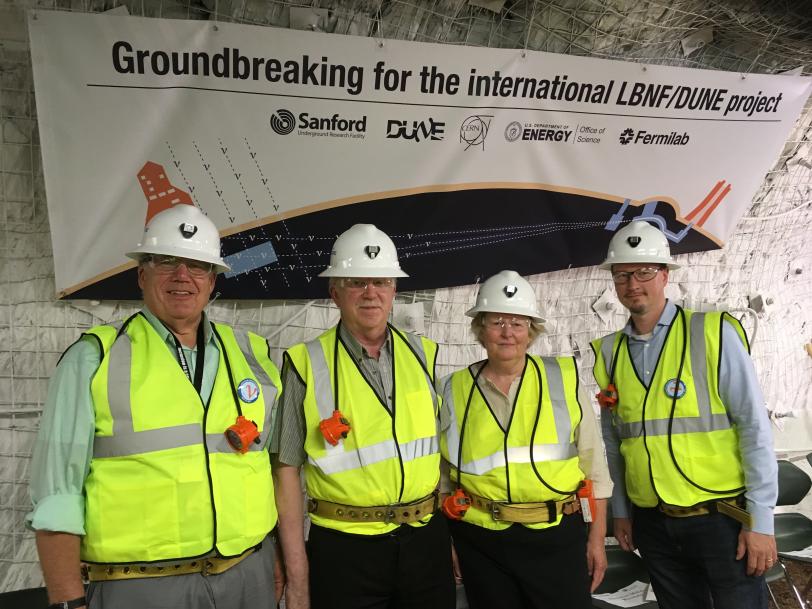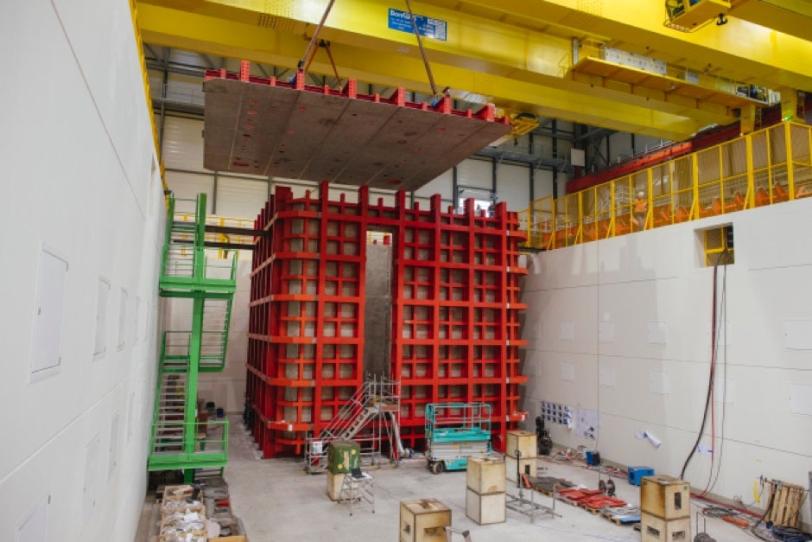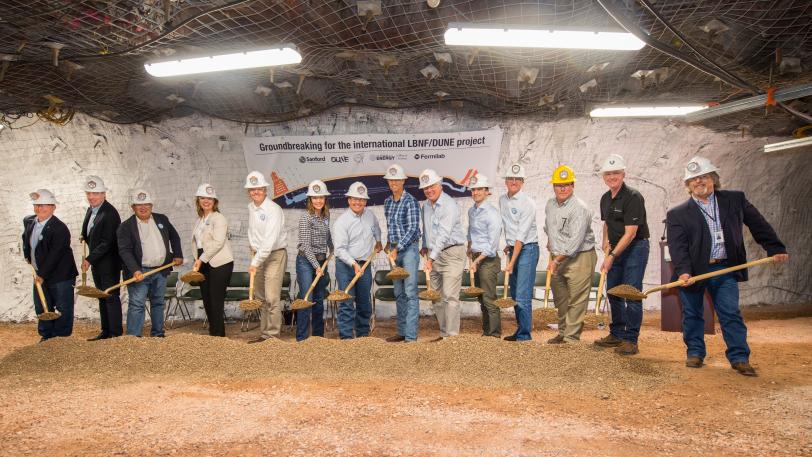Construction of Massive Neutrino Experiment Kicks Off a Mile Underground
A unique groundbreaking ceremony marked the start of construction of the Long-Baseline Neutrino Facility – future home of the Deep Underground Neutrino Experiment, which promises to shed new light on how the universe works and why matter exists.
A new era in international particle physics research officially began July 21 with a unique groundbreaking held a mile underground at the Sanford Underground Research Facility in South Dakota. Dignitaries, scientists and engineers from around the world marked the start of construction of a massive international experiment that could change our understanding of the universe. The Long-Baseline Neutrino Facility (LBNF) will house the international Deep Underground Neutrino Experiment (DUNE), which will be built and operated by roughly 1,000 scientists and engineers from 30 countries.

When complete, LBNF/DUNE will be the largest experiment ever built in the United States to study the properties of mysterious particles called neutrinos. Unlocking the mysteries of these particles could help explain more about how the universe works and why matter and not antimatter dominates the universe.
“This groundbreaking and the massive underground excavation that will soon follow is a clear signal to the global science community that the U.S. is moving forward with its ambitious plan to host a global megascience project centered on elucidating the properties of neutrinos as a centerpiece of its high-energy physics program for the next two decades or more,” says David MacFarlane from the Department of Energy’s SLAC National Accelerator Laboratory. He chairs the Long-Baseline Neutrino Committee, which reviews scientific, technical and managerial progress, plans and decisions associated with LBNF/DUNE.
In the experiment, researchers will send a beam of neutrinos 800 miles through the Earth – from Fermi National Accelerator Laboratory near Chicago to Sanford Lab, where a four-story-high, 70,000-ton underground detector will catch the particles. Scientists will study the interactions of neutrinos in the detector, looking to better understand changes the particles undergo as they travel across the country in less than the blink of an eye.
Ever since their discovery 61 years ago, neutrinos have proven to be one of the most surprising subatomic particles, and the fact that they change between three different states is one of their biggest surprises. That discovery began with a solar neutrino experiment led by physicist Ray Davis, performed in the 1960s in the same underground mine that will now house LBNF/DUNE. He was awarded the 2002 Nobel Prize in physics for this work.

DUNE scientists will also look for differences in behavior between neutrinos and their antimatter counterparts, antineutrinos, which could provide clues to why matter exists at all and why matter and antimatter didn’t annihilate each other after the Big Bang. Moreover, DUNE researchers will watch for neutrinos produced in star explosions to further our understanding of these powerful cosmic events, and they will seek an answer to the longstanding fundamental question of whether protons, components of atomic nuclei, are stable or have a limited lifetime.
Institutions in dozens of countries will contribute to the construction of DUNE. The experiment will attract students and young scientists from around the world, helping to foster the next generation of leaders in the field and maintain a highly skilled scientific workforce in the United States and worldwide.
DUNE prototype detectors are under construction at CERN, the European particle physics laboratory, which is a major partner in the project. The technology refined for those smaller versions will be tested and scaled up when the massive DUNE detectors are built.
“Our group is taking part in building and operating the data acquisition system for the prototype at CERN, which will begin taking data in 2018,” says Mark Convery, the head of SLAC’s LBNF/DUNE team. “We’ll also be involved in the analysis of these data, as well as data from similar detectors, employing advanced techniques such as machine learning. This experience will help us optimize the design of the 70,000-ton detector. We’re very excited to see construction at Sanford Lab begin as the first step toward building the giant detector.”
SLAC also pursues an understanding of the properties of neutrinos through a variety of other complementary experimental programs. “SLAC is rapidly becoming a center for research on neutrinos, whose properties are a crucial component of understanding cosmology and the evolution of the universe since the Big Bang,” says JoAnne Hewett, director of Elementary Particle Physics at SLAC.

Now that the first shovelful of earth has been moved, crews will begin excavating more than 870,000 tons of rock to create the huge underground caverns for the DUNE detector. Construction is projected to take 10 years.
This research is funded by the DOE Office of Science in conjunction with CERN and international partners from 30 countries. DUNE collaborators come from institutions in Armenia, Brazil, Bulgaria, Canada, Chile, China, Colombia, Czech Republic, Finland, France, Greece, India, Iran, Italy, Japan, Madagascar, Mexico, Netherlands, Peru, Poland, Romania, Russia, South Korea, Spain, Sweden, Switzerland, Turkey, Ukraine, the United Kingdom and the United States.
Editor’s note: This feature is based on a press release by Fermilab.
Contact
For questions or comments, contact the SLAC Office of Communications at communications@slac.stanford.edu.
SLAC is a multi-program laboratory exploring frontier questions in photon science, astrophysics, particle physics and accelerator research. Located in Menlo Park, Calif., SLAC is operated by Stanford University for the U.S. Department of Energy's Office of Science.
SLAC National Accelerator Laboratory is supported by the Office of Science of the U.S. Department of Energy. The Office of Science is the single largest supporter of basic research in the physical sciences in the United States, and is working to address some of the most pressing challenges of our time. For more information, please visit science.energy.gov.






